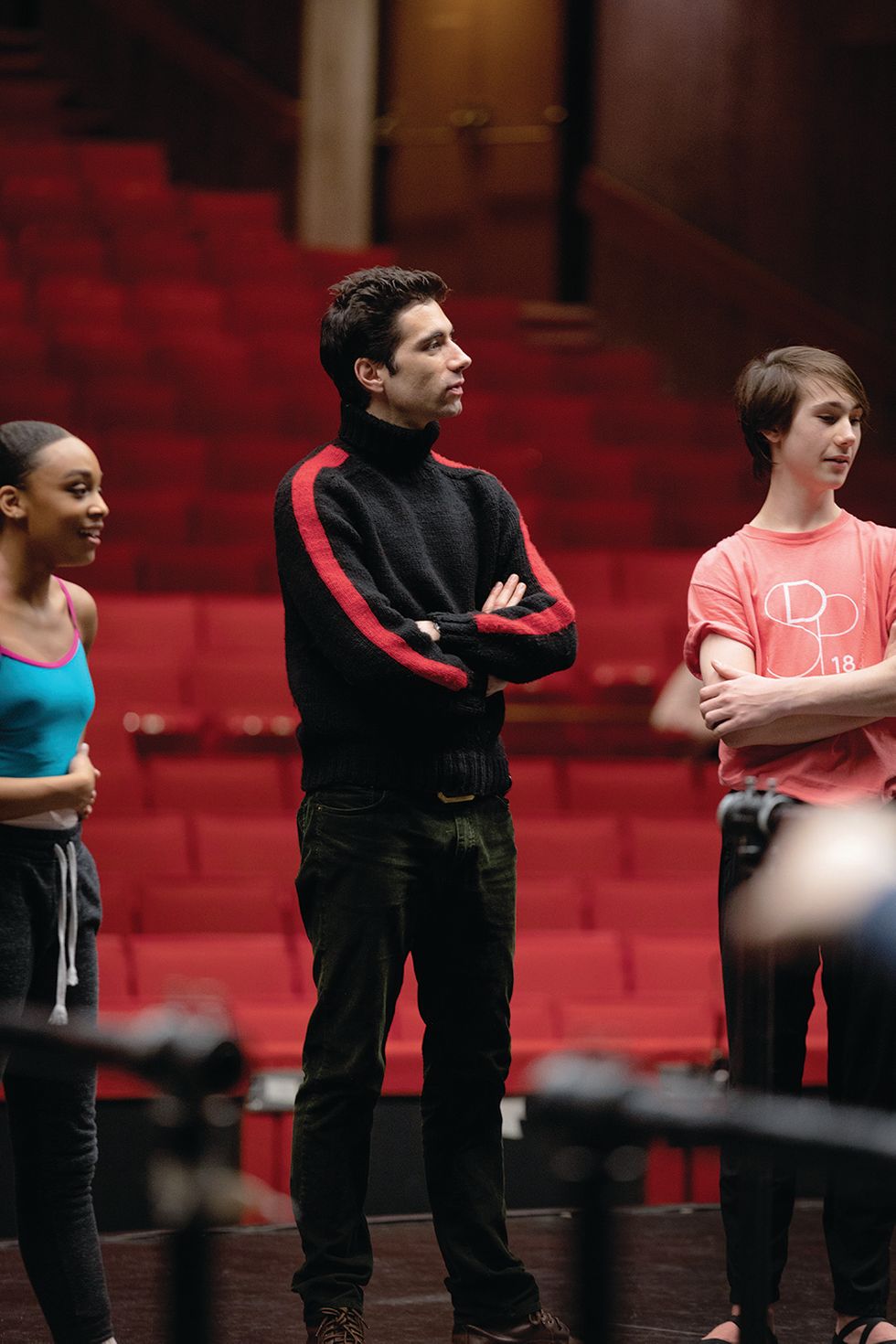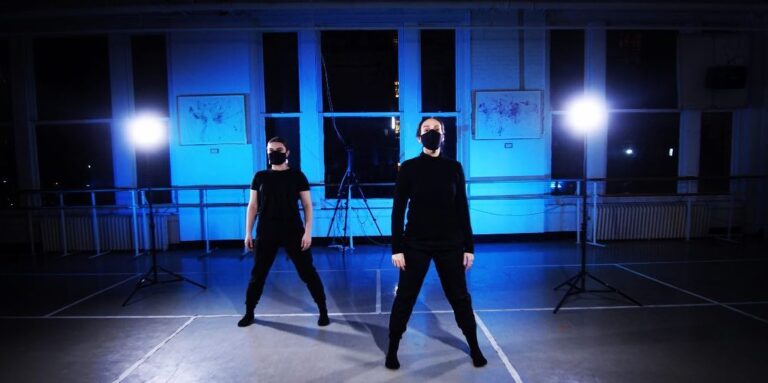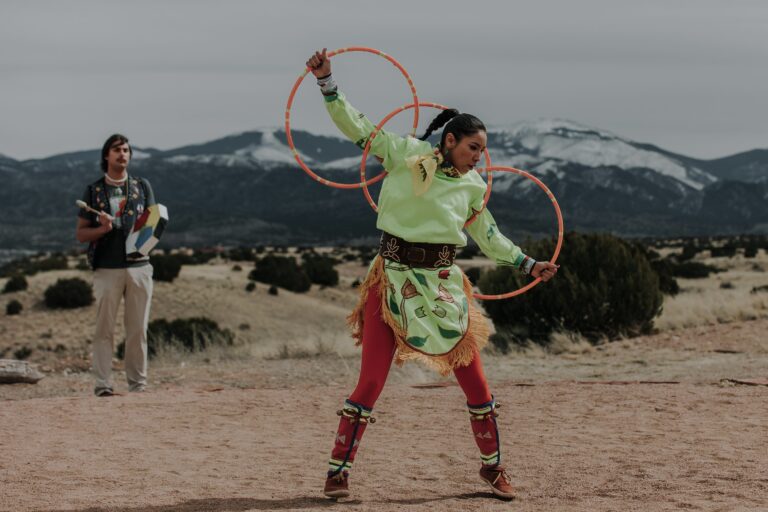
When Joseph Morrissey first took the helm of the dance division at Interlochen Center for the Arts, a boarding high school in Interlochen, Michigan, he found a fully established pre-professional program with space to grow. And his vision was big, with plans to stage the kind of ambitious repertory he’d experienced during his dance career. But the realities quickly set in. During his first year in 2015, the department was denied by the George Balanchine Trust to license any Balanchine ballets—the dancers were not quite ready.
This early disappointment didn’t derail Morrissey. In just four years, he has not only raised Interlochen’s training standards, he’s staged ambitious full-length ballets and been granted the rights to works by Merce Cunningham, Agnes de Mille and, yes, Balanchine. Guest artists regularly visit, and he’s initiated major plans to expand the dance department building. Morrissey is only 37, but it should come as no surprise that he’s done so much so fast—his entire life’s journey has prepared him to be an artistic leader.
Building the Tool Kit
Morrissey began ballet at age 7 at the Boston Ballet School. He often danced children’s roles with the main company and became captivated with ballet’s behind-the-scenes magic: the grandness of the theater, the gorgeous sets and costumes, the spectacular production elements (such as the hot air balloon in the company’s Nutcracker). He developed an early interest in becoming a director. “It’s never been a question in my mind that I wanted to produce classical ballets,” says Morrissey.
He recognized that he would need a different skill set than the typical dancer, with an education that would give him a broad perspective of both dance and business. After spending his high school years at the Harid Conservatory in Boca Raton, Florida, he received his BS in classical ballet at Indiana University. He then performed professionally with Boston Ballet II and Bavarian State Ballet in Munich, Germany.
Yet Morrissey knew his road to becoming a director wasn’t going to come from being a ballet star. After three seasons in Munich, he left to pursue an MA in performing arts administration at New York University—a decision that surprised his colleagues and peers. But Morrissey wanted to understand all facets of the business. “Getting a master’s degree was part of my goals,” he says. His NYU education included courses in leadership, marketing and microeconomics, to name a few. “Having that backbone—it’s an asset, for sure,” he says.
Following NYU, Morrissey headed to the Portland School of Ballet in Maine, where he directed its Collaboration Outreach Responsibility Performance Scholars (CORPS) Program, a pre-professional curriculum for high school students. Then in 2013, he got a big opportunity overseas as director of artistic planning and touring for The Hong Kong Ballet. The position challenged Morrissey administratively. But when he learned about the opening at Interlochen, he decided to apply. “I saw an opportunity to really build something, and I love teaching,” he says.
Leading the Way
Morrissey’s first step as dance director was to beef up artistic programming. His first year, he choreographed a new production of The Nutcracker, staged a suite from La Bayadère, and brought in Paul Taylor’s Company B and Mark Morris’ Polka. The Nutcracker featured a live orchestra from the Interlochen School of Music, and other productions have had the institution’s full design and production support—which included building a life-size elephant for La Bayadère. “That’s the moment where people were like, ‘He’s not playing games,'” Morrissey says, joking.
Trey Devey, Interlochen’s president, says he sees the difference not only in the students’ performance but in everything that supports the artistic product, including marketing. “Because of Joseph’s professional experience, he has held us to an appropriately high standard,” Devey says.
Another priority for Morrissey was developing the men’s program and maintaining enough male enrollment to support the artistic programming. “It’s like not having enough violinists for the orchestra,” he says. He has steadily maintained male enrollment at 25 percent of the student body by fostering a nurturing environment for all levels, as well as foundational training that can take a male dancer from the absolute base to a pre-professional level.
Lastly, Morrissey felt that it was imperative to invite guest artists in to teach, stage master works or choreograph. “It is very important when you are trying to build something that while you are building it, you’re exposing it,” he says. “You don’t want to wait.” Recent visitors have included Wendy Whelan, Craig Hall, Carlos Lopez, Leslie Browne, Herman Cornejo, Claudio Muñoz, Amanda McKerrow, John Gardner, Karine Plantadit, Deborah Wingert, Diana White and Paul Sutherland.
Then there were goals that would take much longer to achieve. Now within his fifth school year, Morrissey finally has the opportunity to add two full-time faculty members. And the entire institution is backing his desire for a complete renovation and annex of the existing dance building. “We knew that if we were going to take the program to the next level, we needed to invest in the infrastructure of the building,” says Devey. “When we understood Joseph’s vision, the physical manifestation became more visible to us.” The slated 22,000-square-foot, $6.8 million facility broke ground in October.
The Outcomes
There are clear signs that Morrissey’s efforts to build a premier pre-professional dance program are working. His early disappointment with the Balanchine Trust fueled him and his faculty to strengthen the dancers’ training, emphasizing simple, skill-oriented combinations, shifts of weight, and speed and clarity of footwork. The curriculum is rooted in Russian methodologies, providing a pure classical base to enable students to take on numerous styles and varied repertory.
Deborah Wingert, a répétiteur for the George Balanchine Trust, has witnessed the students’ progression and says the program now merits licensing the choreographer’s works. “Getting to dance these ballets means you have enough of a classical base to warrant bringing in the artists who will come in and teach it, stage it or coach it,” she says. Thus far, the school has gotten to perform excerpts of Balanchine’s Serenade and The Four Temperaments. The program now also receives the rights to masterworks such as Agnes de Mille’s Rodeo, Antony Tudor’s Little Improvisations and Merce Cunningham’s Changing Steps. And Morrissey has staged full-length productions of The Sleeping Beauty and Swan Lake, as well as fully produced suites from Don Quixote and Le Corsaire—a level of repertory typically reserved for professional companies.
Additionally, over the past four years the dance program has been invited to perform at The Joyce Theater and Carnegie Hall in New York City, and to tour its full-length productions throughout Michigan. And students have received professional and university placements with the Alvin Ailey/Fordham BFA Program, Boston Conservatory, Indiana University, Butler University, Hubbard Street Professional Program, Nederlands Dans Theater, Oklahoma City Ballet and Boston Ballet II.
Morrissey’s leadership is taking Interlochen’s program to its fullest capability. With a new, larger facility, he hopes to eventually establish ballet, contemporary and commercial tracks, “where students can study the dance genre that they really want, with ballet as a through line,” he says. “We need to keep the curriculum current and fresh to keep evolving to the needs of the dance world.” His passion for ballet is contagious, and is clearly yielding beautiful results.






